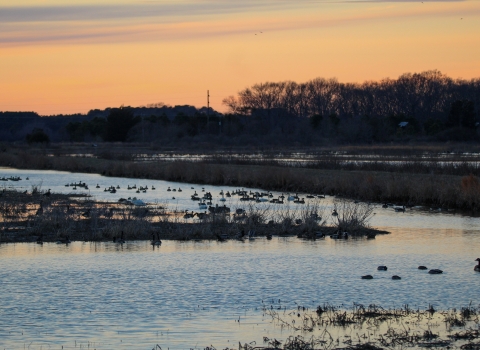Q. What are the primary effects to grizzly bears from the proposed Rock Creek Mine?
A. The potential effects to grizzly bears from the proposed Rock Creek mine are human-caused mortality, displacement from key habitat, and connectivity of habitat. The mitigation plan contains a number of measures to reduce the potential for these effects. Overall, the net effect of the mitigation plan will be positive for grizzly bears in the Cabinet Yaak Ecosystem (CYE).
Q. What will be done to minimize or mitigate the effects to grizzly bears?
A. The Service expects most of the potential negative effects would occur during the construction phase of the mine. Several measures were added to the mitigation plan since 2003. Among the measures to reduce or avoid adverse effects to grizzly bears, Revett Silver Co. would fund: three grizzly bear specialists and one law enforcement officer; bear-resistant food and garbage storage at the mine site, at the homes of mine employees, and at county garbage transfer stations; the acquisition of 2450 acres of privately-owned grizzly bear habitat in the CYE; public information and education programs; and linkage habitat research in the CYE. In addition, prior to, during and after construction of the mine, continuous monitoring of grizzly bears in the Cabinet Mountains will be funded and conducted in order to monitor the effectiveness of the mitigation plan, to monitor grizzly bears augmented through the Montana Fish, Wildlife and Parks program, and to monitor habitat use by grizzly bears. Adaptive management will be employed, when needed, to ensure the mitigation plan fulfills its objectives. If monitoring shows elevated or unanticipated risks to grizzly bears, the Service would request re-initiation of consultation to address the issue. Over time, we expect that full implementation of the conservations measures would result in a net positive effect for grizzly bears in the CYE, even with development of the mine. Without the funding provided by the mining company, few of these needed conservation measures could be accomplished because of lack of available government funding.
Q. What were the Court’s concerns regarding the remanded biological opinion?
A. The Court was concerned about whether the small CYE grizzly bear population could sustain the expected human-caused mortality associated with the development of the project when the population was already in decline. Another Court concern was how the Service had determined the effects of displacement on grizzly bears.
Q. How were the Court’s concerns addressed in this biological opinion?
A. Regarding grizzly bear mortality, the Service believes the mine may result in one human-caused grizzly bear mortality. However, several measures were added to the mitigation plan to address the concerns raised by the Court. They include an additional grizzly bear specialist for the Libby area, increased levels of sanitation throughout the CYE, and deferring construction of the mine until at least 6 grizzly bears are augmented into the Cabinet Mountains. These measures are expected to actually lower the number of human-caused grizzly bear deaths in the CYE, even with development of the mine.
The Service did a better a job of explaining how it analyzed and determined the effects of displacement on grizzly bears. The mitigation plan includes a number of measures that lessen the effect, namely access management and 2,450 acres of mitigation habitat is required.


